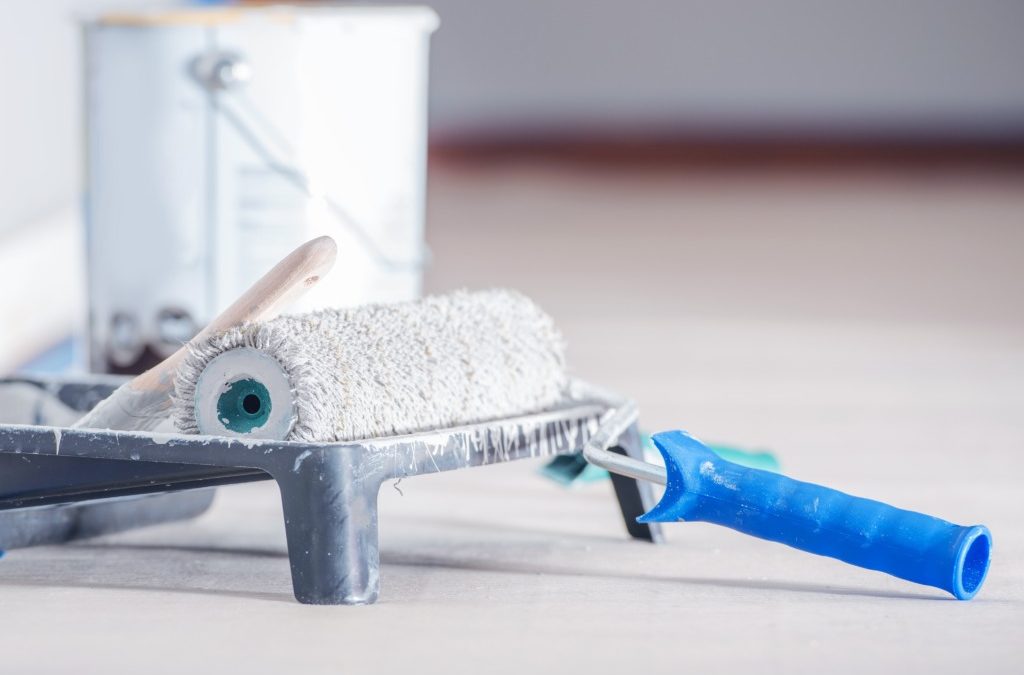When it comes to home improvements around the house, there will be many things on your list to get to in an effort to reinvent your home’s interior and exterior looks. Whether you are doing the improvements yourself or hiring a contractor to work through your list, there will be many tasks to complete that will leave your home with an unfavorable condition present in the air of your personal indoor environment. Construction materials such as wood, glues, adhesives, flooring, furniture, and even paint have all been found and labeled to be sources of contamination within your home – and will elevate the levels of pollutants in the home to new heights that you may have never experienced before.
Among the list of construction materials classified as potentially dangerous to your environment and health, paint ranks high on the list as it produces extraordinary levels of VOC’s (Volatile Organic Compounds) into the air that will leave you with poor indoor air quality and potential health effects from exposure to these hazardous chemicals. Paint comes in a variety of different types such as water-based, latex, acrylic, oil-based, solvent-based, and even zero VOC paint, which can all have different effects on the environment.
In this article we are going to discuss the hidden dangers of paint fumes, how the paint fumes impact the environment and the health of those exposed, and how to properly mitigate and remove paint smell from a room or house.
Are Paint Fumes Harmful
Paint is a wonderful addition to your home’s aesthetic, maybe you picked a beautiful light blue to brighten your home or even painted some chipped paint to give your walls a more polished look – the application of paint in the room can be just what your home needs. After you apply paint to your home’s walls or items it can produce an amalgam of chemicals into the environment that will leave you with tainted indoor air quality, which can conversely lead to potential health issues in those who are exposed.
Right after you finish painting, the paint will begin a process called off gassing that produces chemicals into the air upon exposure into an environment. VOCs, also known as Volatile Organic Compounds, are the most prevalent chemicals found within the composition of paint and can raise the pollution levels in the space drastically. During the off-gassing process, these VOCs are the chemicals that get released back into the air and create the pungent odor that we associate with paint fumes in the air.
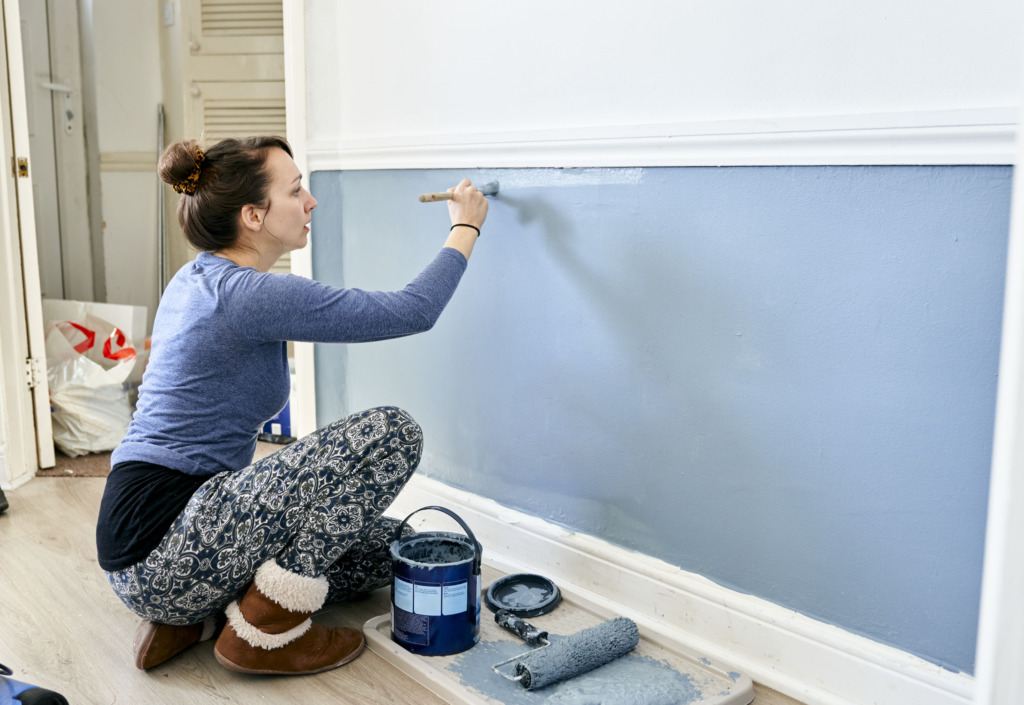
How Long Do Paint Fumes Last?
When paint fumes begin to emit into the environment inside your home, the smell will float within the area and rapidly spread into the air space. The fumes, which are an amalgam of chemicals or VOCs in the air that are being off gassed will commence this process as it becomes acclimated to the home’s conditions. VOCs are compounds that are used in the manufacturing of many household items and when these items are introduced into a climate-controlled environment like a home, it will turn these solid or liquid compounds into a gas that will spread rapidly throughout the air of the indoor space.
These VOCs will release and off-gas into the air for quite a while following the introduction of the chemicals into the environment, this can last for weeks to even months after first exposure. This is why the paint fumes from painting stay in your home for quite a while after the initial first painting of your home.
What is in Paint & Why Does it Smell
When it comes to paint there are many different compounds that are used to form the paint. There are generally four main ingredients that are used in the composition of paint – pigments, binders, solvents, and additives. Pigments are used in paint to provide the color along with hiding properties and bulking the consistency of the paint. Binders provide performance of the paint and support the ability for the paint to dry quicker. Solvents are liquids that provide the pathway for pigments and binder to get onto the surfaces – the solvents are usually oil-based, alkyd, or latex. Lastly, additives found in paint give it the ability to create additional performance properties such as a thickening agent, surfactants and soaps, biocides, defoamers, and co-solvents. The additives are typically the components that contain the most dangerous chemicals that are found in the paint.
After you paint you may wonder what exactly is the cause of the pungent fumes that the paint produces. The smell that it emits is more than just a smell, it is actually a mix of chemicals that when combined together in the environment will form an odor that will be difficult to remove. As we discussed earlier, VOCs in the paint are responsible for the noxious odor fumes from the paint. And this is true as to why paint has a strong smell, the VOCs released into the air from the paint will produce upwards to 1,000 times higher levels of chemicals in the indoor air.
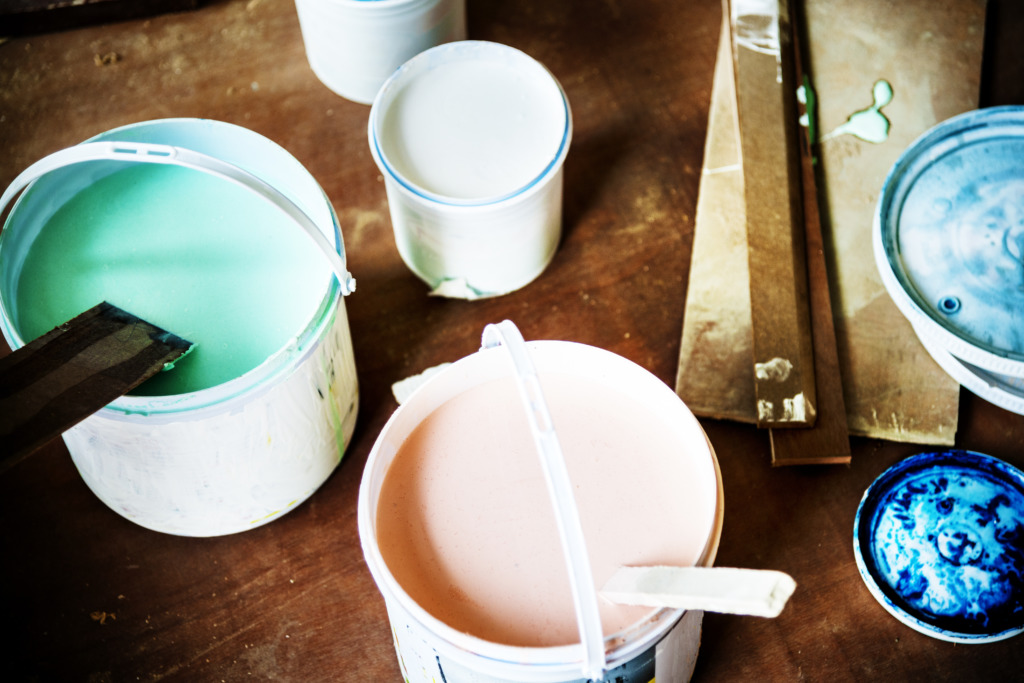
Can You Sleep in a Freshly Painted Room?
Have you recently painted your bedroom in your home? Often times we will paint rooms in our homes including rooms that we sleep in that will need time to air out before you can go back to sleeping in this indoor space. The harmful and potent fumes produced from the paint will off gas into the room as the paint dries and make it very dangerous for people to be exposed to these heightened chemical spaces.
The length of time that it may be potentially dangerous to sleep in a room that has been freshly painted can range depending on a number of different factors including the type of paint that was used, the amount of paint that was applied in the environment, and how much airflow and ventilation is available in this environment. It is recommended, however, that as long as you have increased airflow and proper ventilation in the room continuously then you should be able to re-enter the room within 3 to 5 days after painting and painting off gassing has finished – but for those who are particularly sensitive to chemicals and their odors it may take even longer than that before you can re-enter and sleep in this room.
Inhaling Paint Fumes Symptoms
What happens when you are exposed to an environment that is tainted and plagued with toxic paint fumes in the air? As paint fumes float in the air and become inhaled or ingested by those in the area, it can trigger and elicit a bout of symptoms within these individuals that can range depending on the level of exposure and the amount of chemical VOCs present in the air. The different symptoms from paint fumes that one may experience after they have been exposed to these fumes includes the following:
- Headaches
- Nausea
- Fatigue
- Dizziness
- Confusion
- Difficulty breathing
- And potential issues with kidney, brain, and liver damage.
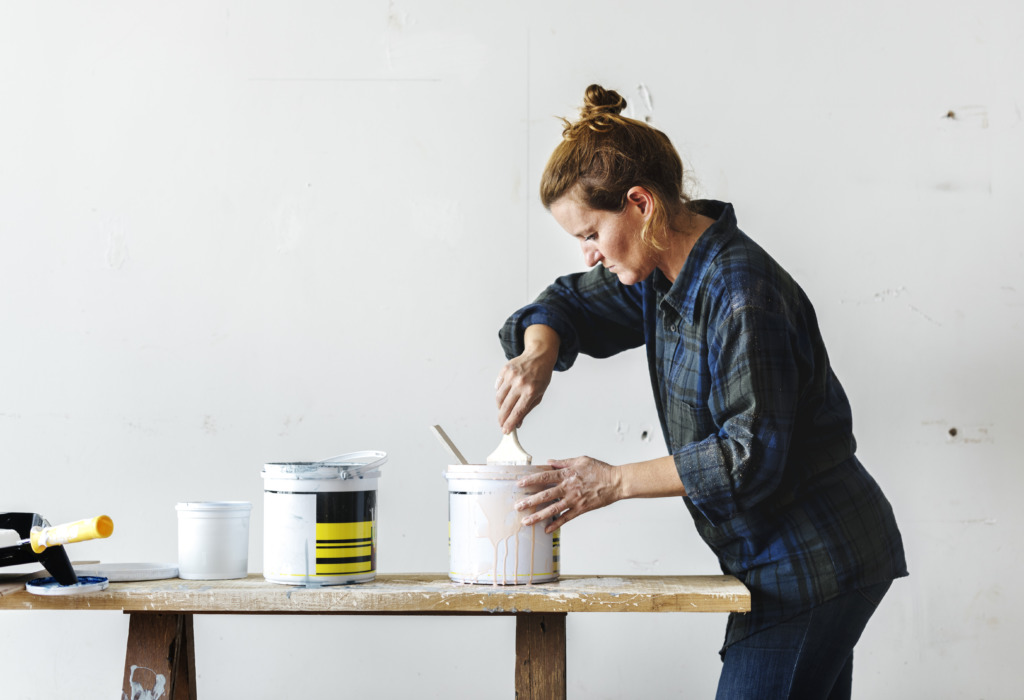
How to Get Rid of Paint Smell in Room
The process of removing paint smell from your home or in a room can be extensive and require many steps or methods to implement to rid the odorous chemicals from the environments air. When you begin painting it can be helpful to keep windows wide open and place fans in the window to pull the contaminated air filled with VOCs out of the air in the enclosed space of the room. By placing fans and opening windows during the painting process, it will help to reduce your exposure to the paint fumes during the painting process.
The real issue of paint smell comes after the painting has taken place in the environment. The smell of paint fumes can last for days, weeks, and sometimes even months after the painting takes place. The fastest way to reduce and ultimately get rid of paint smell is to use an effective air purifier for VOC paint removal.
VOC Air Purifier for Paint Fumes
Air purifiers are devices that are used to clean and filter the air of pollutants, ultimately helping to improve and protect the air quality within these indoor spaces. There are many different types of air purifiers available to consumers, these purifiers will vary in technology – which means that they will vary in effectiveness against certain airborne pollutants such as odors, particulates, and even chemicals.
A popular air purifier technology, that is typically used during situations like painting where VOC concentration is high in the environment, is carbon technology. Carbon uses a process called adsorption that takes toxic gasses and attracts them to the carbon filter allowing it to stick to the media. Over time though, as the filter begins to fill entirely, the carbon technology will begin releasing these gaseous chemicals back into the air, re-polluting the air.
The EnviroKlenz Air Purifier, on the other hand, is an air purifier technology that uses adsorptive neutralization where the chemical is captured and completely broken down or neutralized, eliminating the risk of re-release in the future. EnviroKlenz uses a process that is scientifically backed with a patented earth mineral technology that is highly effective for chemical and odor neutralization in the air. The EnviroKlenz core chemistry irreversibly captures and neutralizes the VOCs in paint fumes and does so by utilizing their adsorptive neutralization process where the earth minerals neutralize and destroy the chemicals.
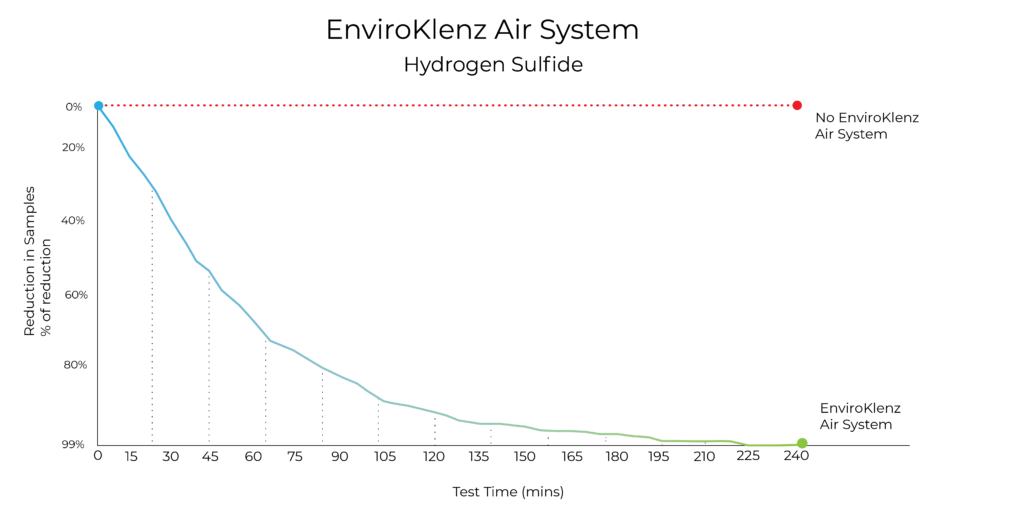
In this chamber study, a volatile organic chemical was released in an environmental chamber under ambient conditions. The EnviroKlenz Air System was used with the EnviroKlenz Air Cartridge and HEPA Filter inside. The test unit was placed in a sealed test chamber measuring 1000 cubic feet. Air samples were taken from the test chamber once the unit was turned on. The process was then repeated without the test unit in the chamber to provide the natural decay results.
The EnviroKlenz Air System effectively removes Hydrogen Sulfide at 99% in 4 hours.

Air System
$699.00
-
EnviroKlenz® Medical Disclaimer:
“Any information that is provided on this website is not for the use by any commercial or personal entity without expressed written consent of the blog author. The material and statements illustrated within this blog are not intended to diagnose, treat, cure, or prevent any diseases or medical conditions. Nor does the author in any way guarantee or validate the validity, totality, or efficacy of any claims and will therefore not be held responsible for the content of any claims. Always consult your medical physician for any specific medical advice or recommendations.”

